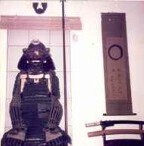-
Posts
1,371 -
Joined
-
Last visited
-
Days Won
19
The Blacksmith last won the day on August 10
The Blacksmith had the most liked content!


The Blacksmith replied to John C's topic in Military Swords of Japan

The Blacksmith replied to John C's topic in Military Swords of Japan

The Blacksmith replied to John C's topic in Military Swords of Japan

The Blacksmith replied to John C's topic in Military Swords of Japan

The Blacksmith replied to John C's topic in Military Swords of Japan

The Blacksmith replied to Bruce Pennington's topic in Translation Assistance

